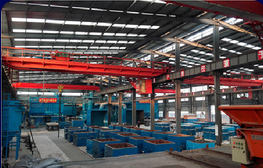
Metal stamping is a cold-forming process that utilizes dies and stamping presses to transform sheet metal into different shapes. Items of flat sheet metal, typically called blanks, is fed right into a sheet metal stamping press that runs on the tool and die surface to make the metal right into a new shape. Production facilities and metal fabricators offering stamping services will place the material to be stamped between die sections, where the usage of pressure will shape and shear the material into the desired final shape for the merchandise or component.
This informative article describes the metal stamping process and steps, presents the forms of stamping presses typically employed, talks about the benefits of stamping compared to other fabrication processes, and explains the several types of stamping operations and their applications.
Basic Concepts of Metal Stamping
Metal stamping, also referred to as pressing, is really a low-cost high-speed manufacturing process that may create a high level of identical metal components. Stamping operations are ideal for both short or long production runs, and be conducted with other metal forming operations, and may include more than one of some more specific processes or techniques, such as:
Punching
Blanking
Embossing
Coining
Bending
Flanging
Punching and blanking reference the use of a die to slice the material into specific forms. In punching operations, a scrap piece of material is removed while the punch enters the die, effectively leaving an opening in the workpiece. Blanking, on another hand, removes a workpiece from the principal material, making that removed component the required workpiece or blank.
Embossing is an activity for creating either an increasing or recessed design in sheet metal, by pressing the raw blank against a die that contains the desired shape, or by passing the material blank via a roller die.
Coining is just a bending technique wherein the workpiece is stamped while placed between a die and the punch or press. This action causes the punch tip to penetrate the metal and results in accurate, repeatable bends. The deep penetration also relieves internal stresses in the metal workpiece, causing no spring back effects.
Bending identifies the general technique of forming metal into desired shapes such as L, U, or V-shaped profiles. The bending process for metal results in a plastic deformation which stresses above the yield point but below the tensile strength. Bending typically occurs around a single axis.
Flanging is a procedure of introducing a flare or flange onto a metal workpiece through the usage of dies, presses, or specialized flanging machinery.
Metal stamping machines can do more than just stamping; they could cast, punch, cut and shape metal sheets. Machines can be programmed or computer numerically controlled (CNC) to offer high precision and repeatability for every single stamped piece. Electrical discharge machining (EDM) and computer-aided design (CAD) programs ensure accuracy. Various tooling machines for the dies used in the stampings are available. Progressive, forming, compound, and carbide tooling perform specific stamping needs. Progressive dies may be used to create multiple pieces on a single piece simultaneously.
For more details check out sheet metal stamping.
No comments:
Post a Comment